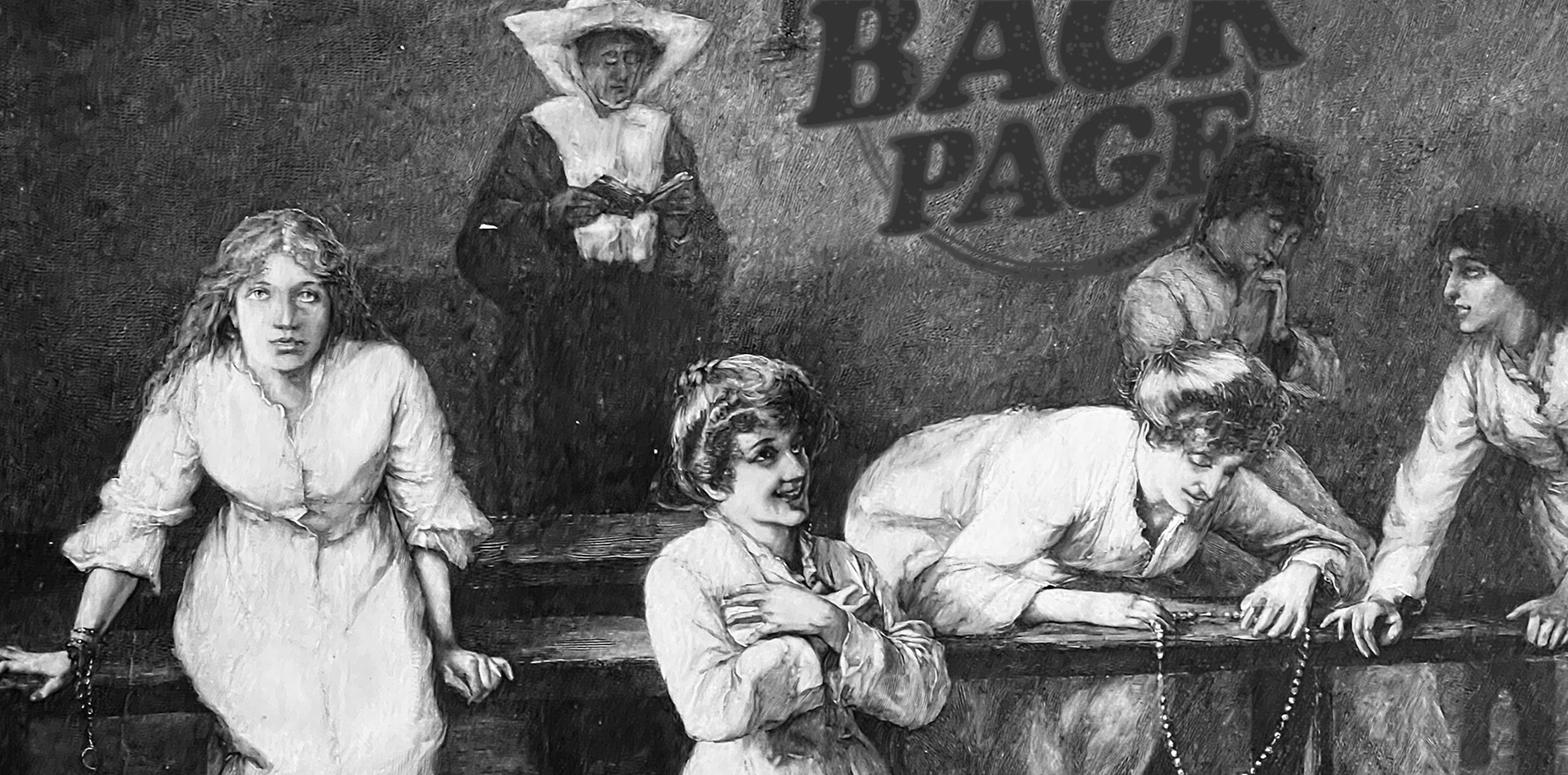Attaching a diagnostic label may increase benevolence but may also strip perceptions of agency.
The Back Page spent the weekend wallowing in Victorian-era weird and gothic fiction, namely The King in Yellow by Robert W. Chambers and The Woman in White by Wilkie Collins.
The two have some similarities besides the colourful titles, including a few unfortunate characters’ confinement and “treatment” in lunatic asylums – a man for a brain injury, a woman ostensibly for an unspecified “mental affliction” but really for being an inconvenient woman, and another woman for … but no spoilers.
The unpleasantness of the treatments is left to the reader to imagine but is clearly enough to traumatise the characters. “If Hawberk knew how I loathe that word ‘lunatic’, he would never use it in my presence,” the first tells us in Chambers’ The Repairer of Reputations. “It rouses certain feelings within me which I do not care to explain.”
Contrast that with today when we discuss mental health and diagnoses quite freely, fearing few reputational consequences let alone the loss of our liberty, and it’s hard to find any fault with the change.
But there could be a slight downside along with the undeniable upside, a new study in PLoS suggests, of the public’s increased mental health literacy and of diagnostic inflation, in which thresholds for diagnosis are lowered and ordinary responses like sadness and anxiety are pathologised.
“The theory of concept creep suggests that broadened concepts of harm tend to have mixed blessings,” the authors write. “On the one hand, they promote care and moral concern for the person who is harmed, but on the other, they may foster fragility and victim-based identities.”
A labelled disorder may be seen, by others and by the patient, as permanent rather than something from which a person may recover.
The team carried out two studies in which hundreds of respondents were given vignettes that described individuals with mild symptoms of six DSM-V conditions – major depressive disorder, bipolar disorder and generalised anxiety disorder in study 1, post-traumatic stress, binge-eating and obsessive-compulsive disorder in study 2 – with or without a diagnosis attached.
When the condition was labelled, participants in study 1 were significantly more likely to show empathy (means of 3.43 vs 3.15 on a five-point scale) especially for MDD, judge them suitable for treatment (4.13 vs 3.81) and believe their problems were permanent (3.11 vs 2.74).
“This perception of persistence could be interpreted positively as evidence that the person’s difficulties are serious rather than trivial, but it could also contribute to prognostic pessimism, reflecting the concern that diagnostic labels can make problems seem part of the affected person’s identity,” the authors say. Prognostic pessimism is “often considered a dimension of stigmatising attitudes”.
There was slightly more inclination to provide accommodations (e.g. at work or uni) but this was non-significant.
The second, larger study (706 respondents) was intended to strengthen the findings of the first but there was some discordance between them, with the higher empathy finding failing to replicate.
People with labels were significantly more likely to be thought to deserve accommodations (means 2.56 vs 2.44), to be suitable for professional treatment (4.05 vs 3.91) and to have less control over their problems (3.01 vs 3.17). However, the greater perception of permanence and the notion that their problems were central to who they were did not reach significance.
A mixed bag of results pointing to “the potential mixed blessings of diagnostic labels”.
In the real world they mean diagnostic labels could bring more public benevolence towards the person and towards funding support; but they may also strip a person of their perceived agency in their own eyes as well as others’.
“Empathic responses to people experiencing relatively mild levels of mental ill-health are surely better than unempathetic ones, but they may reinforce diagnosis-based identities that have self-limiting aspects. Endorsement of special allowances can provide beneficial flexibility to people in distress, but they can also reinforce avoidance and adoption of a sick role. Diagnostic labels may promote professional help-seeking, but mental health services may become stretched if people at the less severe end of the spectrum seek treatment,” they write, quickly emphasising that people should be encouraged to seek professional help.
The authors venture further into the lion’s den when they say: “These positive outcomes [i.e. empathy and support] may also encourage further concept creep by making diagnosis-based identities socially rewarding.”
To which we can only add that when society has things as wrong as it did just over a century ago, some overcorrection is not the worst thing that can happen.
Send creeping dread in picturesque settings to penny@medicalrepublic.com.au.


